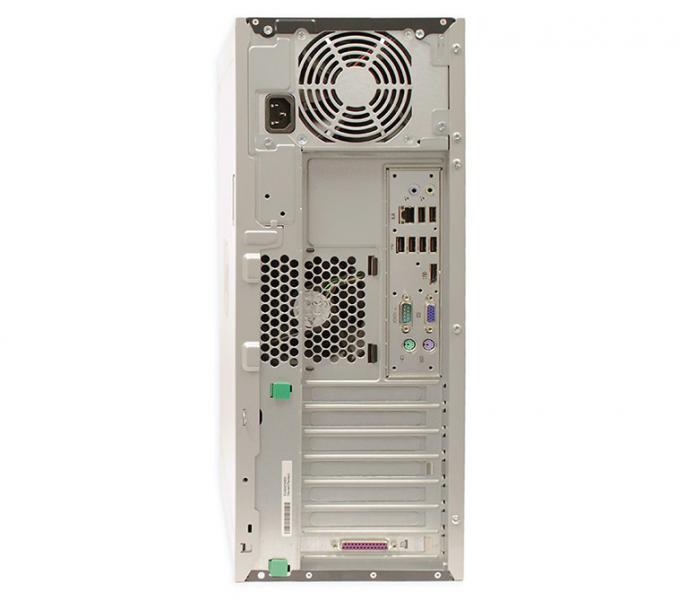
Power Socket This is where you'll connect the power cord to the computer.
Audio In/Audio Out Almost every computer has two or more audio ports where you can connect various devices, including speakers, microphones, and headsets.
Ethernet Port This port looks a lot like the modem or telephone port, but it is slightly wider. You can use this port for networking and connecting to the Internet.
USB Ports On most desktop computers, most of the USB ports are on the back of the computer case. Generally, you'll want to connect your mouse and keyboard to these ports and keep the front USB ports free so they can be used for digital cameras and other devices.
Monitor Port This is where you'll connect your monitor cable. In this example, the computer has both a DisplayPort and a VGA port. Other computers may have other types of monitor ports, such as DVI (digital visual interface) or HDMI (high-definition multimedia interface).
Serial Port This port is less common on today's computers. It was frequently used to connect peripherals like digital cameras, but it has been replaced by USB and other types of ports.
PS/2 These ports are sometimes used for connecting the mouse and keyboard. Typically, the mouse port is green and the keyboard port is purple. On new computers, these ports have been replaced by USB.
Expansion Slots These empty slots are where expansion cards are added to computers. For example, if your computer did not come with a video card, you could purchase one and install it here.
Parallel Port This is an older port that is less common on new computers. Like the serial port, it has now been replaced by USB.